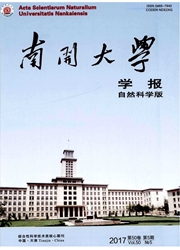

 中文摘要:
中文摘要:
一些带菌禾草能导致取食动物产生中毒症状.在内蒙古草原上,羽茅(Achnatherumsibiricum)带菌率高且稳定存在,而同属带菌植物能导致取食牲畜产生中毒症状,带菌羽茅也可能会来危害.因此,选择了一种有效的杀真菌剂丙环唑(Propiconazole),在种子、幼苗和成株3个层次上进行处理,探索适合杀除羽茅内生真菌的方法.结果显示,用4.00a.i.btL/g种子的丙环唑浸种4h可有效降低羽茅种子中内生真菌感染率;用4.00~6.00a.i.g/L丙环唑进行叶片喷施,处理萌发7d的幼苗和成株,能获得较高的存活率和杀菌率.这为控制羽茅内生真菌提供了几种可行的方法.
 英文摘要:
英文摘要:
Some grasses could bring the grazers toxicity syndromes due to alkaloids pro- duced by the endophytes, attracting much attention. In the Inner Mongolia steppe, Achnatherum sibiricum (Linn.) Keng was found harboring endophytes at a high rate. It was reported that the grasses in Achnatherum genus with endophytes could cause "summer syn- drome" and "staggers disease" to the grazers, so A. sibiricum with endophytes may also have toxicity at potential risks. Therefore, in this study, an effective fungicide, Propiconazole (Prop.), was chosen~to treat the A. sibiricum on the seed, seedling and adult plant levels. The results showed that at the concentration of 4.00 a.i. L/g seed, Prop. can significantly reduce the vitality of the endophytes in seeds after being dipped for 4 h. When sprayed on the leaves at 4.00~6.00 a.i. g/L, Prop. can most effectively eliminate the fungi out of 7 days old seedlings and adult ramet with a high survival rate.
 同期刊论文项目
同期刊论文项目
 同项目期刊论文
同项目期刊论文
 Benefits of a symbiotic association with endophytic fungi are subject to water and nutrient availabi
Benefits of a symbiotic association with endophytic fungi are subject to water and nutrient availabi 期刊信息
期刊信息
